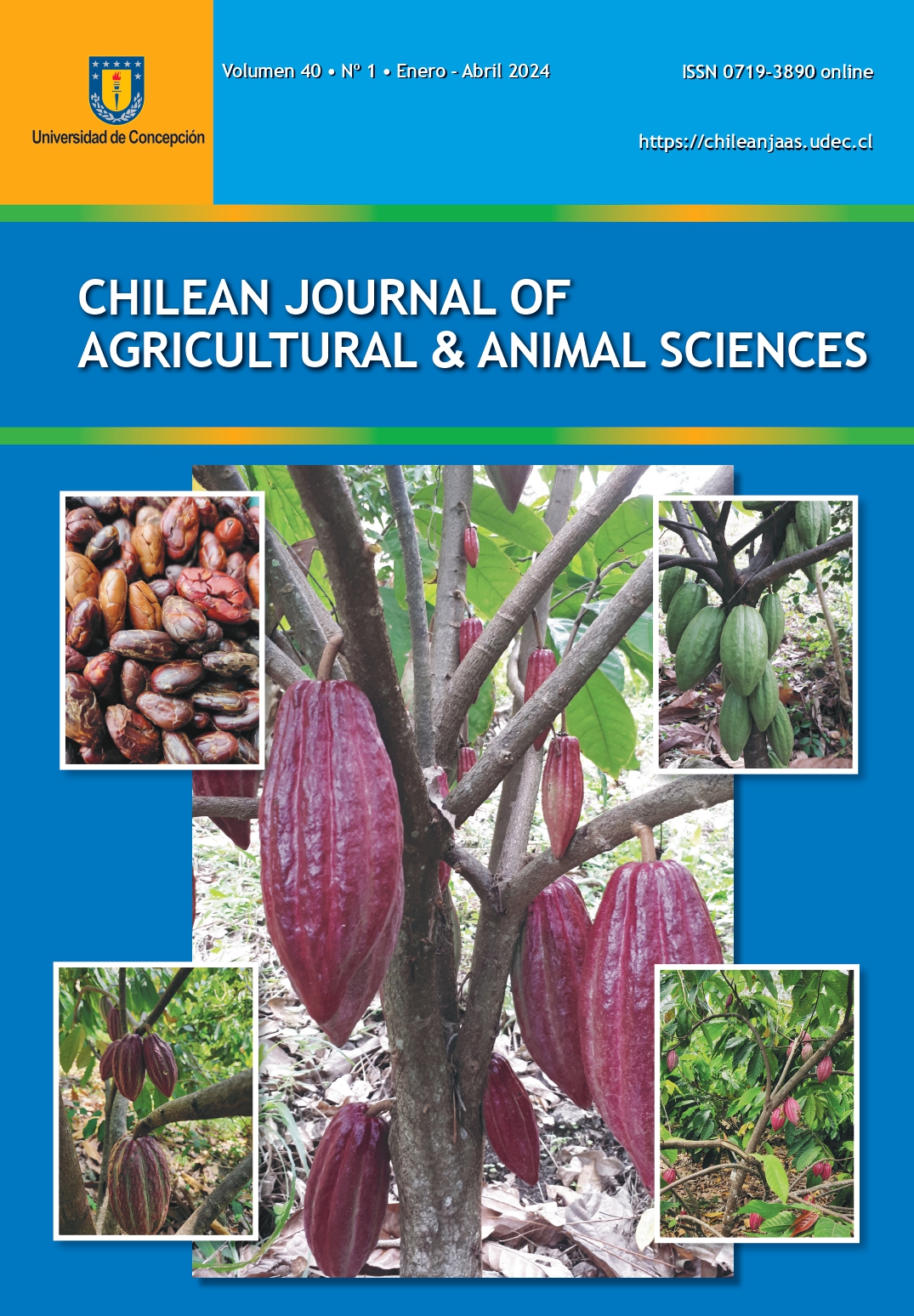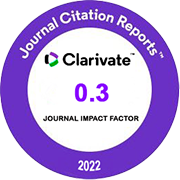CARCASS TRAITS IN SIMMENTAL AND SIMBRAH CATTLE IN MEXICO
DOI:
https://doi.org/10.29393/CHJAAS40-10CCRV90010Keywords:
Beef cattle, carcass yield grade, phenotypic correlationsAbstract
The objective of this study was to evaluate the effect of some factors on carcass traits and the phenotypic correlations between them. Records from 514 Simmental and 178 Simbrah bovine individuals born in Mexico between 2011 and 2018 were used. The variables evaluated were rib eye area (AOL), rump fat thickness (GC), back fat thickness (GD), adjusted intramuscular fat (GI), marbling (M) and carcass yield grade (R). Adjusted means and phenotypic correlations between traits were estimated with PROC MIXED and PROC CORR of SAS®. The fixed effects included in the models were breed, sex of the animal, herd, year of measurement, season of measurement, and age in days at measurement as a covariate; sire nested in breed was included as a random effect. The effect of breed was significant for GC (p<0.001), R (p<0.07) and GD (p<0.07). The effects of sex and season were significant (p<0.001) for all the evaluated traits. The correlations of AOL with all other traits were significant (p<0.001); negative with GI and M; and positive with GC, GD, and R. The correlations of GC with GD and R were important and positive (p<0.001). Selecting phenotypes to increase lean meat can lead to a decreased fat content. The positive phenotypic correlations between R and carcass quality traits would imply that the aforementioned traits can be improved without any adverse effects on them and R in the population.
Downloads
Published
How to Cite
Issue
Section
Copyright (c) 2024 Rafael Upalía-Orozco, Guillermo Martínez-Velázquez, Moises Montaño-Bermúdez, José Manuel Medina-Chapa, Ángel Ríos-Utrera, Apolo Adolfo Carrasco-García, José Manuel Martínez-Hernández, José Alfredo Villagómez-Cortés, Vicente Eliezer Vega-Murillo

This work is licensed under a Creative Commons Attribution 4.0 International License.






